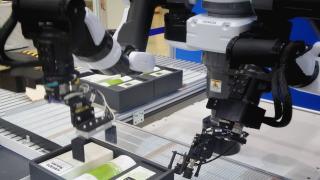
Within the manufacturing industry, computers have always played a pivotal role in transforming initial product ideas from concepts to reality. The invention of computer-aided manufacturing (CAM) was introduced with the purpose to reduce design time and produce prototypes without reconfiguring.
CAM is now taking on a vast responsibility in all operations of manufacturing, including planning, design, management, transportation and storage. Today’s CAM capabilities have experienced a long history of innovation and adaptation. As design and manufacturing evolve, computer-aided manufacturing must cater to their needs.
What Is Computer Aided Manufacturing?
Computer-aided manufacturing, also known as CAM, is where software and computer-controlled machinery are used to automate a manufacturing process. A CAM system is made up of three functions including :
- Software that generates toolpaths for a machine.
- Machinery that turns raw materials into a finished product.
- Post-processing, which converts toolpaths into a language machine.
READ: What is Subtractive Manufacturing and Should I Be Using It?
CAD and CAM:
CAD, which refers to computer-aided design, relies heavily on CAM.
CAD, which refers to computer-aided design, relies heavily on CAM. CAD is used for the design process of a product, controlling how it looks and how it functions. This is then followed by the CAM process, where the product is made into a final physical form.
To start the manufacturing process, development begins in the world of design, with engineers creating either a 2D or 3D drawing. Once this design is complete, the file is then exported into the CAM software. The chosen machinery prepares the model for production, transforming raw material into a defined shape through actions such as cutting, drilling, or moulding.

How CAM has helped the manufacturing industry:
CAM has offered the manufacturing industry endless possibilities regarding design, communication, management and quality of goods.
In the modern world, pretty much every manufacturing plant uses at least one type of CAD/CAM system to control its production. Over time, CAM has offered the manufacturing industry endless possibilities regarding design, communication, management and quality of goods. As technology advances, the manufacturing industry moves along with it, with new computers and software that meet modern-day requirements. Here are just a few ways in which CAM has helped manufacturing evolve throughout time:
Improves Machine Capabilities:
By using a CAM system, manufacturers can improve their machining capabilities. For instance, they can now rely on a range of combination software. Whilst the CAM system automates the process, this makes it easier for manufacturers to complete the project in time and also minimises mistakes.
CAM is constantly going through updates and advancements, with new capabilities coming out regularly. With the vast improvements over the past few years, there is no sign of these capabilities slowing down.
READ: Is Rapid Prototyping the Future of Manufacturing?
Client Accessibility:
This function also enables manufacturers to reduce errors, execute projects simply, and deliver products within a short turnaround.
The majority of CAM systems have the ability to accept CAD files from their customers. After receiving these files, the tool path can be set up and simulations are performed. This transaction can help to calculate the machining cycle times. This function also enables manufacturers to reduce errors, execute projects simply, and deliver products within a short turnaround.
Client accessibility is also improved through the easy communication these systems provide. Both CAD and CAM software offer a customer a more in-depth, detailed view of the product, which - compared to a few years ago - is a lot more intricate and realistic.
Reduces Material Wastage:
As both CAM and CAD software feature simulation features, this helps a manufacturer to visually analyse the process. This feature contributes to the overall productivity of the manufacturing set-up and can also help to eliminate mistakes, reduce material wastage and help manufacturers to plan their materials accordingly.
As initial plans and designs are so detailed, the moment production gets to CAM, there should be a finalised view for each part of the product that has been thought out thoroughly.
READ: A Greener Approach to Injection Moulding
The future of computer-aided manufacturing:
When it comes to the future of computer-aided manufacturing, everything is relative to the digital industry. With more businesses opting for a digital, online approach, this software will expand into business models, training, production systems, machinery, security and services. Some technologies expected for the future of computer-aided manufacturing include:
This software will expand into business models, training, production systems, machinery, security and services.
- Sensory technology
- The Internet of Things
- Reality capture augmentation
- Back chaining
- 5G and the cloud
- Artificial intelligence
These advantages are the key contributors to the manufacturing industry. As the advantages keep on expanding, the rising popularity of computer-aided manufacturing systems also grows. Industries such as construction, automotive, toolmakers, moulders and product designers are finding a new use for CAM every single day.
READ: What is Lean Manufacturing?
Author details:
Kerry Beeby - Director - Pro Moulds:
Kerry had been a long-standing director at Pro Moulds after helping to start the company back in 1994. She’s been a driving force within the company, making sure that they push for innovation across their departments.